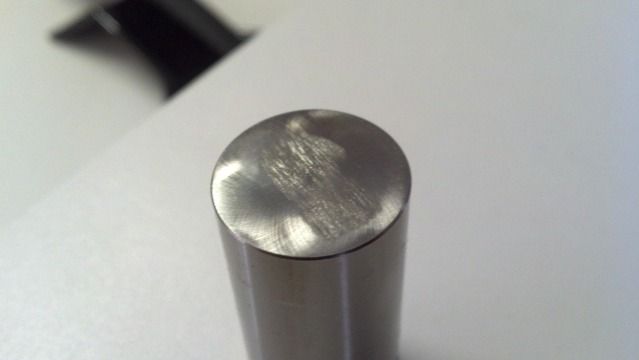UOP
Well-Known Member
Well, I'm pretty sure I've got a wiped cam, but by looking at the damage did I catch it soon enough to avoid having to pull the motor? The cam and lifter both appear to be just showing the signs. I couldn't get a good enough pic of the lobe, but it's showing signs very similar to the lifter. No major damage, but both have grooves big enough to catch your fingernail.
I think I caught it in time, but would like some input before making any plans.

Thanks as always......
I think I caught it in time, but would like some input before making any plans.

Thanks as always......
















